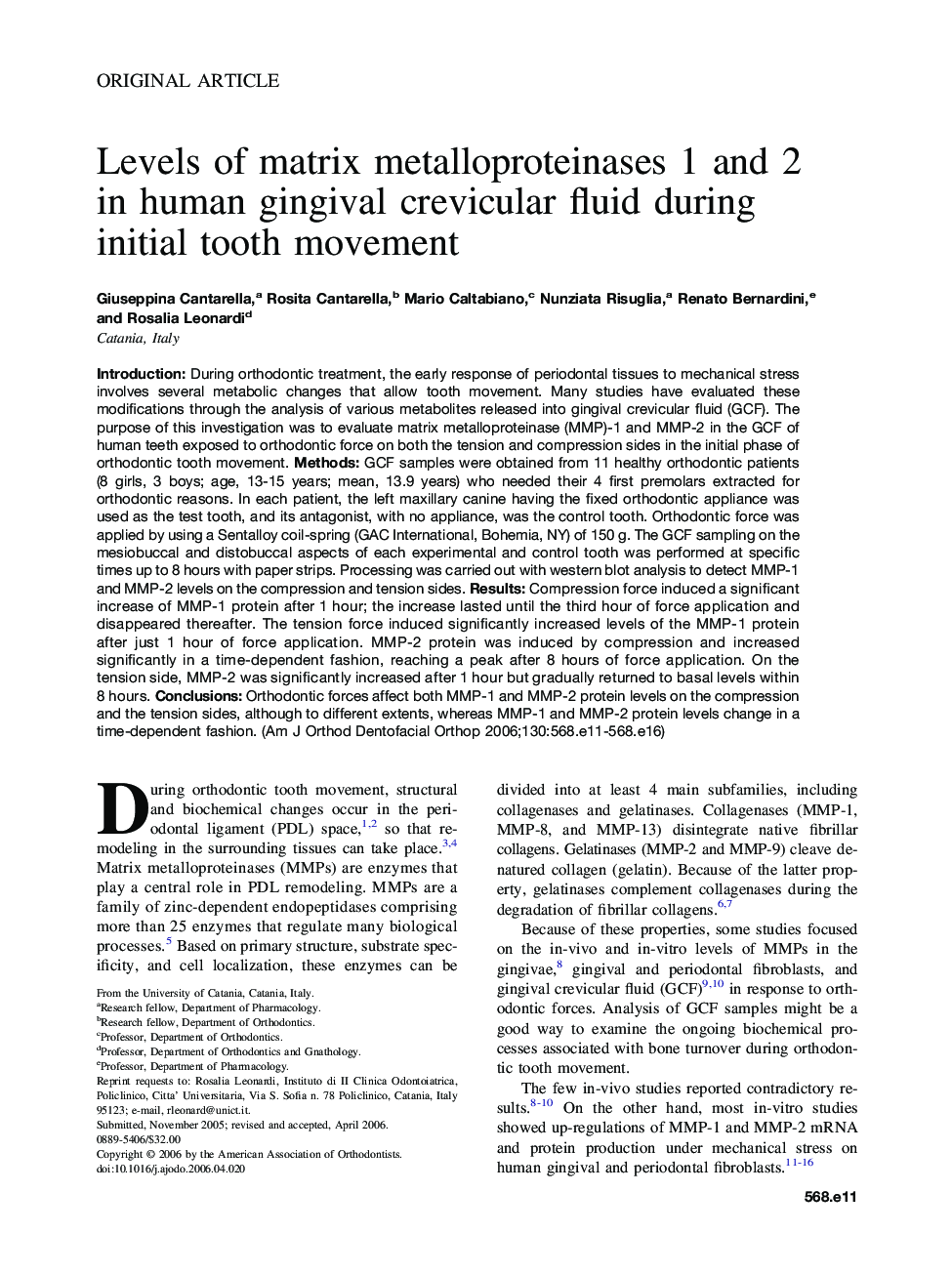| Article ID | Journal | Published Year | Pages | File Type |
|---|---|---|---|---|
| 3119876 | American Journal of Orthodontics and Dentofacial Orthopedics | 2006 | 6 Pages |
Abstract
Introduction: During orthodontic treatment, the early response of periodontal tissues to mechanical stress involves several metabolic changes that allow tooth movement. Many studies have evaluated these modifications through the analysis of various metabolites released into gingival crevicular fluid (GCF). The purpose of this investigation was to evaluate matrix metalloproteinase (MMP)-1 and MMP-2 in the GCF of human teeth exposed to orthodontic force on both the tension and compression sides in the initial phase of orthodontic tooth movement. Methods: GCF samples were obtained from 11 healthy orthodontic patients (8 girls, 3 boys; age, 13-15 years; mean, 13.9 years) who needed their 4 first premolars extracted for orthodontic reasons. In each patient, the left maxillary canine having the fixed orthodontic appliance was used as the test tooth, and its antagonist, with no appliance, was the control tooth. Orthodontic force was applied by using a Sentalloy coil-spring (GAC International, Bohemia, NY) of 150 g. The GCF sampling on the mesiobuccal and distobuccal aspects of each experimental and control tooth was performed at specific times up to 8 hours with paper strips. Processing was carried out with western blot analysis to detect MMP-1 and MMP-2 levels on the compression and tension sides. Results: Compression force induced a significant increase of MMP-1 protein after 1 hour; the increase lasted until the third hour of force application and disappeared thereafter. The tension force induced significantly increased levels of the MMP-1 protein after just 1 hour of force application. MMP-2 protein was induced by compression and increased significantly in a time-dependent fashion, reaching a peak after 8 hours of force application. On the tension side, MMP-2 was significantly increased after 1 hour but gradually returned to basal levels within 8 hours. Conclusions: Orthodontic forces affect both MMP-1 and MMP-2 protein levels on the compression and the tension sides, although to different extents, whereas MMP-1 and MMP-2 protein levels change in a time-dependent fashion.
Related Topics
Health Sciences
Medicine and Dentistry
Dentistry, Oral Surgery and Medicine
Authors
Giuseppina Cantarella, Rosita Cantarella, Mario Caltabiano, Nunziata Risuglia, Renato Bernardini, Rosalia Leonardi,
